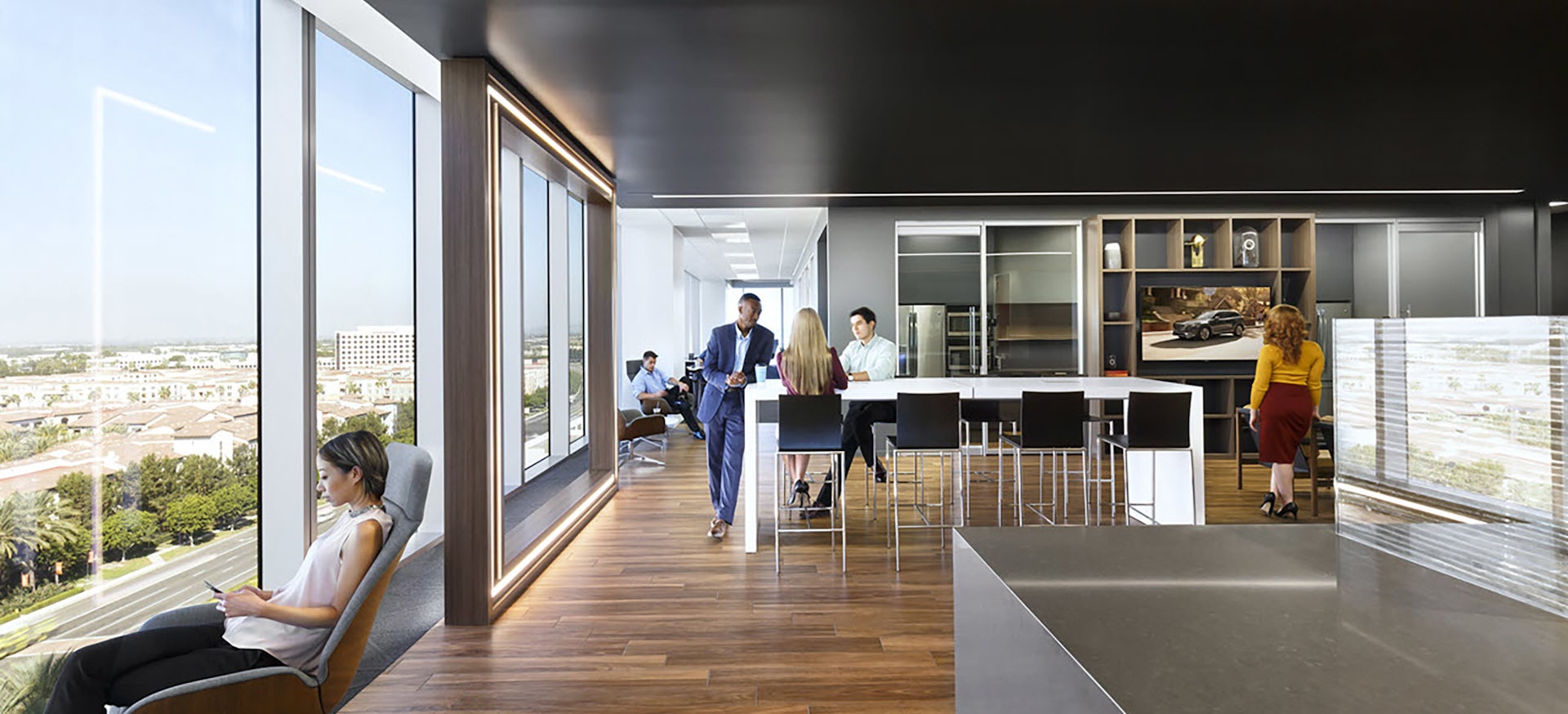No design solution is one size fits all. Even though open offices have become all the rage, a new Harvard study has found that open-office design can lead to less overall productivity and hinder staff communication, according to a representative of Irvine, California–based design firm LPA. In fact, many office occupiers are now finding that a combination of collaborative space and private enclosed offices works best for their employees and their companies.
According to the representative, LPA designers believe customized spaces tailored to the unique needs of the user rather than checking the box on the latest fad ensures a more effective solution. “Far too often, corporate design follows a stale process driven by outside providers who are often more worried about a number goal or selling material than developing a smart design that works for the client,” says the source. “No office should be forced to adopt something seen as cutting edge, simply for the sake of appearing relevant.”
LPA has customized Southern California office spaces for firms including Mazda, DPR, and Certona. SoCal Real Estate spoke with Rick D’Amato, principal and design director of LPA’s workplace design group, about why customization of workspaces is so important and where flexibility for future use comes in.
SoCal Real Estate: Why is customizing workspaces for office tenants becoming more popular than chasing trends?
D’Amato: Customization of the workplace relates more to the specificity of the user and not so much to what is popular or trendy in the marketplace. This specificity results in a solution that is inherently branded in terms of the process of an organization. Branding a space around a process can often lend clarity to the functions of an organization. However, not understanding the nuances of this type of design approach can sometimes lead to antiquation should workflow or process need to adapt to an inflexible workplace solution. It is imperative that this type of design approach be tempered with an understanding of future flexibilities and changing user profiles.
How does a company like LPA achieve this customization?
LPA approaches each new opportunity with a complete understanding of how an organization not only works currently, but also how a firm might potentially work better, smarter, and more effectively in the future. An organization will typically adjust work flow and processes to the spatial solutions and opportunities that are available to them. A revised approach would start with a deep dive into how a process can be better regardless of the environment and how the design of the workplace can support that process. Spaces that are more “activity based” tend to be better utilized and inherently more effective. Through our extensive experience working with corporate-workplace users and the knowledge-based research of LPA Red, LPA has the distinct ability to look holistically at a problem and offer solutions that are tailored to a specific need rather than standardized answers to unrelated issues.
How important is flexibility for future use when customizing offices and how is this achieved?
Flexibility is key to a successful customized office solution. Solutions, while customized, must also be inherently flexible and able to respond to potential changing processes or technologies. While much can be said for a generic, “one size fits all” approach to design, a more effective approach would be a design that supports the nature of a specific process but also can adapt to unique and changing user profiles. This can be accomplished through the creation of a “kit of parts” approach to design, which can be used and applied differently depending on the user and the process.
What else should our readers know about this topic?
It is always a more complex process to design based on need rather than norm. However, this complexity can easily lead to enlightenment and a better understanding of how space affects workflow, process, and user experience. Creating the optimal workplace solution can enhance and inspire new ways of thinking and working together. The customized workplace can transcend the way in which an organization begins to strategize its future. If a workplace has the ability to support change and growth, then the doors remain open to new ideas and concepts and more effective workplace interiors.














